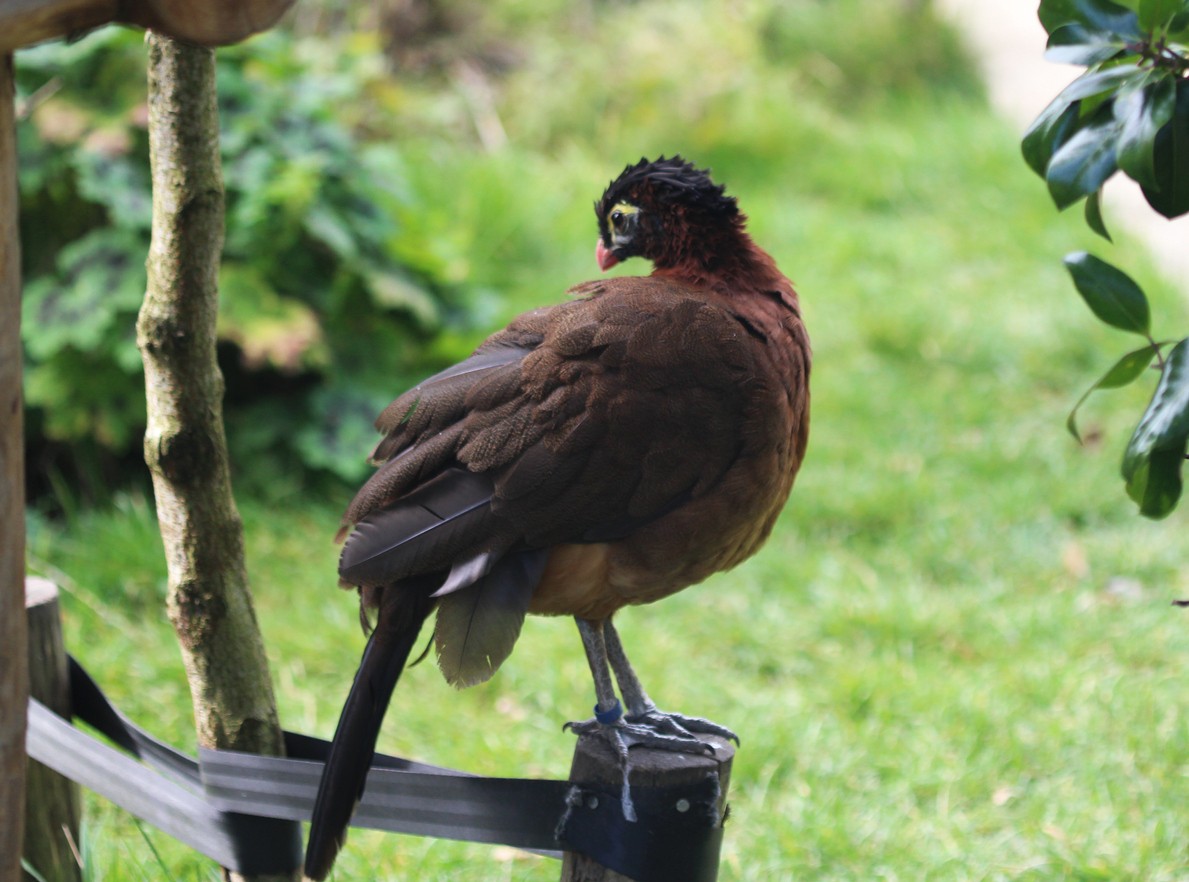Blue-billed Curassow
A species of Curassows Scientific name : Crax alberti Genus : Curassows
Blue-billed Curassow, A species of Curassows
Botanical name: Crax alberti
Genus: Curassows
Content
Description General Info

Description
The blue-billed curassow (Crax alberti) or blue-knobbed curassow is a species of bird in the family Cracidae, which includes the chachalacas, guans, and curassows. They weigh between 7-8 pounds and have a herbivorous diet of fruit and greens. Like other birds, the blue-billed curassow also likes to "sing," or in this case "boom." The males have been observed puffing out their plumage, hunching over, and producing low frequency booms or growls. They sing like this in the mornings and nights. Their songs may serve to ward off rival males, attract a potential mate, or to help maintain their current pair bond with a female. It is found only in Colombia; areas of its range in the south and east are bordered by the Magdalena River. Its natural habitat is subtropical or tropical moist lowland forest. It is threatened by habitat loss. 
Size
93 cm
Life Expectancy
20-29 years
Nest Placement
Tree
Feeding Habits
Blue-billed Curassow primarily consumes tough-shelled Fabaceae fruits, complemented by a diet of worms and insects, showcasing a mix of frugivory and insectivory. Blue-billed Curassow's foraging behavior involves ground feeding, using its robust bill to access food, entailing a unique preference for hard-shelled fruits.
Habitat
Blue-billed Curassow typically inhabits humid undisturbed forests in the lowlands and foothills, as well as on lower mountain slopes within tropical and upper tropical zones. These birds can be found at elevations up to 1200 meters, although they are more commonly seen below 600 meters. Their preference for undisturbed habitats highlights a need for conservation efforts in these regions.
Dite type
Frugivorous
General Info
Feeding Habits
Bird food type

Fruit

